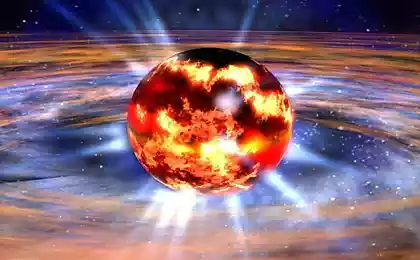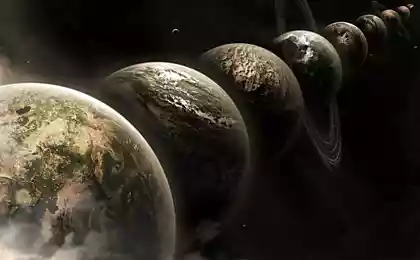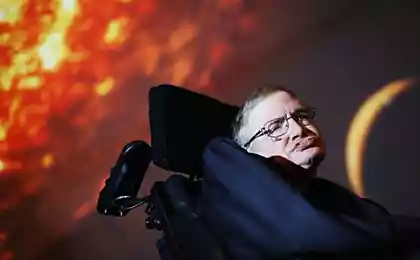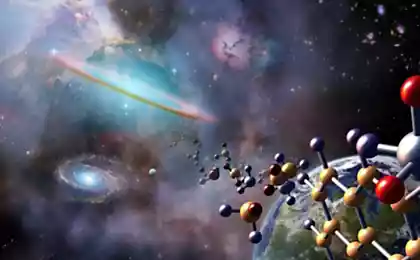466
10 dimensions of our Universe

When someone mentions out loud "other dimensions", we begin to think about all sorts of parallel Universes — alternate realities that exist parallel to ours, but where everything works or happens. However, the reality of measurement and the role they play in our ordering of the Universe, is very different from this popular explanation.
In simple words, the dimensions are different facets of what we perceive under the reality. Best of all we are familiar with three dimensions that surround us on a daily basis — those that define the length, width and depth of all objects in our Universes (the X, Y and Z respectively).
Beyond these three visible dimensions, scientists theorize the existence of others. The theoretical framework of superstring theory say that the universe exists in ten different dimensions. These different aspects determine the Universe, the fundamental forces of nature and all the elementary particles in it.
The first dimension, as we noted, gives the length (X-axis). A good description of a one-dimensional object is a video that exists only from the point of view of length and has no other notable qualities. Add to this a second dimension, the Y-axis, or height, and get an object, which became two-dimensional (e.g., square). The third dimension involves depth (the Z axis) and attaches all objects in the volume. A perfect example is the cube, which exists in three dimensions and has a length, a width, a depth, and hence volume. In addition to these three, there are seven dimensions that do not immediately catch our eyes, but can still be perceived as having a direct effect on the Universe and reality as we know it.
Scientists believe that the fourth dimension is time, which defines the properties of all known substances at any given point. Along with the three other measurements, knowledge of the position of objects in time is important for determining the position in the Universe. The other dimensions are hiding a much deeper, and their explanation is sometimes difficult to understand even to physicists.
According to superstring theory, the fifth and sixth dimension arise where the notion of possible worlds. If we could see in the fifth dimension, we would notice that the world is a little different from ours, and would get a measurement of similarities and differences between our world and another possible.
In the sixth dimension we would see a plane of possible worlds, where you could compare and position all the possible Universes that started with the same initial conditions as ours (i.e. the Big Bang). In theory, if you could master the fifth and sixth dimension, you could travel back in time or choose a different future.
In the seventh dimension you have access to possible worlds, which started from other initial conditions. If the fifth and sixth initial conditions were identical and only the subsequent actions were different, everything will be different since the beginning of time. The eighth dimension again gives us a plane of all possible Universe histories, each of which starts with different initial conditions and branches out infinitely (they are called infinities, obviously).
In the ninth dimension, we can map every possible history of the Universe, starting with all possible laws of physics and initial conditions. In the tenth and last measurement, we come to the point where they can cover all the possible and imaginable. Beyond these limits we, mere mortals, can't think of anything, it is a natural limitation of what we can comprehend in terms of measurements.
The existence of these additional six dimensions which we cannot perceive is necessary for string theory, so she could be a candidate for explaining the fundamental interactions in nature. The fact that we can only perceive four dimensions of space can be explained by one of two mechanisms: either the extra dimensions are compact and at the smallest scale, or our world lives in a three-dimensional submanifold corresponding to a brane, which will be limited to all known particles besides gravity (brane theory).

If extra dimensions are compact, then the extra six dimensions must be in the form of manifolds Calabi-Yau (in the above image). Being invisible to our senses, they could determine the formation of the Universe from the beginning. Why scientists believe that peering back in time and detecting light from the early Universe using telescopes (which was emitted billions of years ago), they could see how the existence of these extra dimensions could affect the evolution of the cosmos.
Like other candidates for the Grand unified theory — a "theory of everything" — the assumption that the universe consists of ten dimensions (or more, depending on the model of string theory that you build upon), it is an attempt to reconcile the Standard model of particle physics with the existence of gravity. In short, it is an attempt to explain the interaction of all known forces in our Universe and how there can be other possible Universes. published
Source: hi-news.ru























